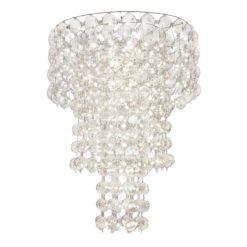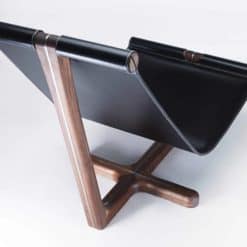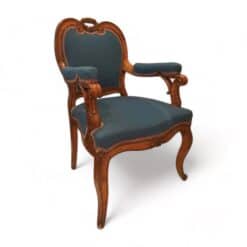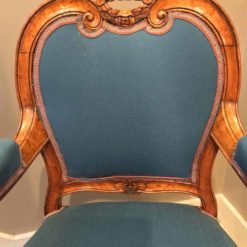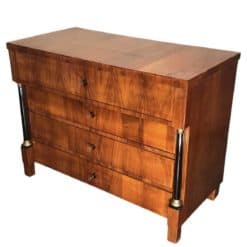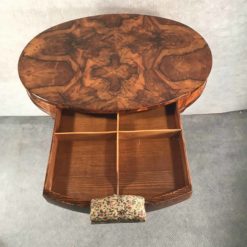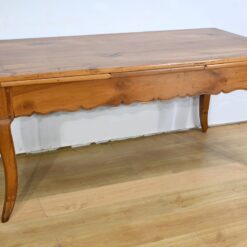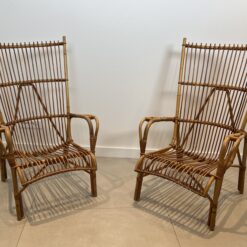Best Sellers
Styylish History
Antique Hardware from America and the UK
Get to Know American and English Antique Hardware
Chances are, you don’t always think about the story or history behind antique hardware. After all, when you’re looking at a gorgeous piece of antique furniture, it’s easy to miss the smaller details.
Types of Antique Hardware
Of course, there are many types of antique hardware. However, Terry Hurley on Love to Know breaks down commonly used fittings for different antique furniture.
- Tables
- Hinges
- Catches
- Forks
- Latches
- Screws
- Castors
- Boxes
- Feet
- Locks
- Catches
- Latches
- Stays
- Hinges
- Lifting handles
- Keyholes and escutcheons
- Padlocks
- Hasps
- Desks
- Hinges
- Locks
- Catches
- Latches
- Stays
- Dresser and drawer
- Handles
- Knobs
- Handle parts
- Fixed drawer pulls
- Legs
- Feet
- Ormolu
- Castor rings and cups
- Castors
- Toe caps
- Armoire
- Lock strike
- Interior surface mount iron cabinet lock
- Half mortise cabinet lock
- Beds
- Bolts
- Bolt covers
- Additional hardware
- Corners and brackets
- Hooks
- Skeleton keys
- Finials
- Capital mounts
A Brief History of Antique Hardware
Understanding a little of the history of antique hardware helps verify the authenticity of the piece in question. After all, when purchasing antique furniture, you want to make sure that everything is authentic!
Besides, you don’t need to be an expert to spot a reproduction! In reality, it just takes a little research about the style in question.
Pre-Industrial (1607-1865)
Before the Industrial Revolution, nearly everything, including hardware, was handmade. But because producing individual pieces was immensely time-consuming, people valued function over form.
Correspondingly, hardware from this period was plain, heavy, and practical.

Eastlake Hardware (1865-1890)
Affordable pieces were mass-manufactured after the Industrial Revolution. For the most part, this led to a surge in new styles and materials. As a result, hardware became more ornate, stylish, and decorated.

Victorian Hardware (1880-1915)
On the whole, the Victorian Era signified the height of antique decorative hardware.
Affordable casting techniques created new finishing and plating methods. Consequently, vibrant, intricate floral motifs in relief became popular in furniture pulls, door knockers, and more.

Arts and Crafts Hardware (1895-1920)
The Arts and Crafts movement opposed the overindulgence of the Industrial Revolution. Although Arts and Crafts style furniture was mass-produced, it is associated with other handmade pieces because of its simplicity.
Additionally, antique hardware from this time mimicked the functionality of past styles and rarely used for decorative purposes.

Revival Hardware (1895-1945)
Revival designs adopted previous motifs and forms to evoke the romance of the “good ole days.” Manufacturers used techniques like those in Arts and Crafts production and produced “handmade” hardware.
Additionally, iron and brass were common because they appeared old-fashioned and historical. For the most part, revival-style fittings are simple, quaint, and romantic.
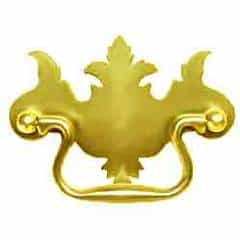
Art Deco Hardware (1925-1940)
Art Deco became the first decorative style to be inspired by the future instead of the past. It used detailed, geometric themes and materials never before utilized in antique hardware designs.
Additionally, chrome-plated steel or brass became standard materials for things like door hardware. On the other hand, furniture hardware used various timbers and vivid Bakelite and plastics.

Streamline Moderne Hardware (1930-1950)
Streamline Moderne blended Art Deco and the Bauhaus-inspired International Style. Furthermore, it highlighted expansive, curving, aerodynamic lines and rounded shapes.
Moreover, plated hardware featured chrome or brushed steel, and brass and aluminum became very popular.

Mid-Century Hardware (1945-1960)
Contemporary mid-century designs reflected the optimism of the time. In particular, pure functionality, clean lines, and durability characterize this style. Designers rejected the embellishments of earlier styles and sought novel, but everyday styles.

Contemporary Hardware (1960-Present)
Contemporary furnishings are often an eclectic mix of old and new, handmade and mass-produced. There isn’t one single style that towers above the rest, and antique and vintage hardware aesthetics remain highly popular.

How to Spot Antique Hardware
The older an antique is, the higher the chance the original hardware has been replaced. However, replacements aren’t always a bad thing.
After all, there are numerous reasons for replacing antique fittings:
- Many owners of antique furniture revitalized old pieces with newer hardware
- Modernizing furniture with damaged or tarnished pulls with new ones
- Aging a contemporary with antique hardware, or
- The cabinetmaker used what he had available
Luckily, modern reproductions are easily noticeable for several reasons:
- Stamped backplates, not cast, or
- Posts pushed into the backplate fittings
And, of course, the hardware looks like it came from Home Depot.
Common Antique Hardware Construction
On the whole, 18th- and 19-century hardware was made of brass. Beginning in the William and Mary period, brass became the primary source for furniture pulls.
Also, during this time, round drop pulls were cast and featured a flat back. Cabinetmakers mounted them on thin brass backplates.
Then, around the 18th-century, cabinetmakers started using the cast bail handle, which connected drawer faces with cotter pins fastened on the interior.
Throughout the 18th century, the bail connected to posts with rounded heads that plugged the jutting bail ears.
Identifying Antique Hardware
So how can you tell if antique brass hardware is original or a replication?
Examine wear patterns
Since it’s simpler to identify replaced pulls than originals, start with thoroughly inspecting the brass and surrounding wood and varnish.

Check for build-up
When antique furniture is waxed or cleaned, the hardware is seldom removed, resulting in the accumulation of wax, polish, and dirt along the edges of fittings attached for years.

Other features to examine:
Of course, the build-up isn’t always present. However, that doesn’t mean the hardware is a replica; it just means you have to continue your assessment.
So, look for features like:
- Indentations made by backplates
- Blemishes in the wood
- Color changes where another pull covered the finish in another part of the furniture.
Next, open the drawers to examine the rear of the interior and look for extra holes that either supported a different plate or have been filled.
After that, check the attachment used to keep the hardware in place. Make sure it coincides with the period and look for evidence of clinched cotter pins replaced for modern fittings.
For example, pre-Industrial Revolution pieces used rounded handmade nuts. On the other hand, mass-produced hardware uses square nuts and has symmetrical threads.
Lastly, remove the hardware if you can, and check the materials under it for shadows or outlines from older pulls and examine the backside of the fittings for casting or milling.

For the most part, the posts in antique fittings tapered for threading with rounded nuts. In contrast, modern accessories are rounded and accommodate squared nuts.
Styylish
Visit the Shop to find your new favorite piece of furniture. Then, check out the Blog for more stylish history and tips!
Sources
- “A Short History of Decorative Hardware.” Liz’s Antique Hardware, www.lahardware.com/pages/a-short-history-of-antique-hardware.
- Hurley, Terry. “Antique Furniture Hardware.” LoveToKnow, LoveToKnow Corp, antiques.lovetoknow.com/Antique_Furniture_Hardware.
- Rahn, Antoinette. “Brass Class: Polish up Your Hardware Knowledge.” Antique Trader, 23 Jan. 2018, www.antiquetrader.com/collectibles/brass-class-polish-up-your-hardware-knowledge.





